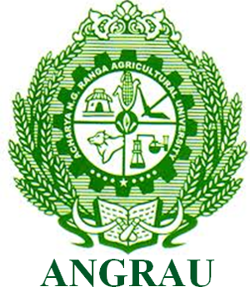Influence of Weather Parameters on the Incidence of Lepidopteran Pests on Groundnut
0 Views
VENKATESWARLU*, M.S.V. CHALAM, N.C. VENKATESWARLU, K. VISWANATH, MOHAN NAIDU AND K.MANJULA
Department of Entomology, S.V. Agricultural College, ANGRAU, Tirupati-517 502.
ABSTRACT
The study was carried out to know the impact of weather parameters on the occurrence of lepidopteran pests in groundnut during kharif, 2021 and kharif, 2022. The highest per cent foliar damage due to Spodoptera litura (Fabricius) (46.00 and 41.45) and Helicoverpa armigera (Hubner) (27.80 and 31.16) were recorded in sown D4 crop (30th July), respectively. Correlation studies indicated that the maximum and minimum temperatures showed a negative impact on foliar damage by H. armigera and S. litura in groundnut crop sown from June first fortnight to July second fortnight (D1, D2, D3 and D4) and significant negative correlation with maximum temperature (-0.55 and -0.62) on H. armigera on groundnut sown in D2 and D4 crops, respectively. The significant negative correlation (-0.53 and – 55) on S. litura in D2 and D3 sown crops during kharif, 2021 and kharif, 2022, respectively. While the minimum temperature exhibited significant negative influence with H. armigera (– 0.60 and – 0.60) in D3 and D4 sown crops. However, minimum temperature exerted negative association (-0.64) on the influence of S. litura in D3 sown crop in kharif, 2021. During kharif, 2022, the minimum temperature exerted significant negative correlation (D1 = – 0.87, D2 = – 0.65, D3 = – 0.74 and D4 = – 0.84) on the foliar damage by H. armigera in all dates of sowing crops. The minimum temperature showed significant negative correlation (- 0.84, – 0.66 and – 0.74) which was recorded in D1, D2 and D3 sown crops. During kharif, 202, morning relative humidity exhibited a significant and positive association in D2 (0.56), D3 (0.64) and D4 (0.77) sown groundnut and evening relative humidity exhibited significant positive association in D3 (0.71) and D4 (0.69) sown crops with respect to foliar damage due to H. armigera. For S. litura morning relative humidity exhibited a significant positive association in D2 (0.56), D3 (0.66) and D4 (0.56) sown crops and evening relative humidity exhibited significant positive association in D3 (0.79) and D4 (0.57) sown crops.
KEYWORDS: Spodoptera litura, Helicoverpa armigera, dates of sowing, groundnut, kharif.
INTRODUCTION
Groundnut is a legume crop which has been cultivated in more than 100 countries in the world covering six continents. Groundnut is the sixth most important oilseed crop in the world contributing around
35.29 per cent of the total oil seeds production in the country during 2021-22 (Directorate of Economics and Statistics, 2022). More than 90 insect pests cause considerable yield reduction in groundnut and among them lepidopteran pests viz., leaf miner (Aproaerema modicella Deventer), tobacco caterpillar (Spodoptera litura (Fabricus), gram pod borer, Helicoverpa armigera (Hubner) and red hairy caterpillar (Amsacta albistriga Walker) are considered as major pests. Among the above, S. litura and H. armigera are the predominant defoliators attacking groundnut during vegetative crop growth period leading to poor yield (Radhika, 2013). Hence, studies are needed on seasonal incidence in relation to dates of sowing to forewarn about the damage due to S. litura and H. armigera for initiating initiate timely control measures.
MATERIAL AND METHODS
The experiment was carried out at Regional Agricultural Research Station, Tirupati during kharif, 2021 and kharif, 2022. The variety Kadiri-6 was sown in plot of 10 m × 10 m with row to row spacing of 30 cm and with plant to plant spacing of 10 cm. The crop was raised duly following normal agronomic practices developed by ANGRAU. The incidence of defoliators (S. litura and H. armigera) was recorded by taking counts on number of larvae per plant on 10 randomly selected plants (mean of 5 observations recorded as final data) and expressed as percentage. Weather data pertaining to maximum and minimum temperature, morning and evening relative humidity (%), sunshine (h) and rainfall (mm) was taken as per standard week from meteorological observatory and used in correlation studies, to know the influence of weather parameters and dates of sowing on the population dynamics of lepidopteran pests.
RESULTS AND DISCUSSION
In first sown crop (15th June – D1) the mean foliar damage due to the incidence of H. armigera and S. litura was observed from 28th SW (Standard Week) (1.07, 2.13, respectively) and increased during 29th SW (4.23, 8.46, respectively) and reached peak during 36th SW (16.62, 24.63, respectively) and gradually decreased at 37th SW (15.38, 23.96, respectively) (Table.1).
In second date of sowing (30th June-D2) the foliar damage started during 31st SW (4.35 and 5.43) and increased during 32nd SW (5.07 and 7.32) and reached peak at 36th SW (20.35 and 28.02) and then decreased at 40th SW (12.18 and 15.86) for H. armigera and S. litura, respectively in kharif, 2021. While in kharif, 2022, the foliar damage started during 31st SW (2.80 and 4.76) and increased during 32nd SW (6.30 and 8.49) and reached peak at 37th SW (28.72 and 34.20) and then decreased at 39th SW (10.49 and 17.32) for H. armigera and S. litura, respectively (Table. 2).
In third date of sowing (15th July – D3) the per cent mean foliage damage due to H. armigera and S. litura in kharif, 2021 started at 33rd SW (9.09, 16.72) and increased during 34th SW (19.46, 30.54) and reached peak at 35th SW (22.26, 31.96) and then decreased at 36th SW (16.67, 28.87). During kharif, 2022, the per cent mean foliage damage due to H. armigera and S. litura started at 33rd SW (7.32 and 9.01) and increased during 34th SW (11.48 and 18.73) and reached peak mean per cent foliar damage by H. armigera at 35th SW (28.77) and for S. litura at 36th SW (34.25) and then decreased at 37th SW (19.66 and 21.91) (Table. 3).
In fourth date of sowing (30th July – D4) the mean foliar damage due to H. armigera and S. litura started at 35th SW (6.18 and 10.36) and increased during 36th SW (8.89 and 11.32,) and reached peak at 44th SW (36.40 and 39.50) in kharif, 2021. While in kharif, 2022, the mean foliar damage due to H. armigera and S. litura started at 35th SW (3.69 and 3.38), increased during 36th SW (4.53 and 5.83) and reached peak at 43rd SW for H. armigera (31.16) and for S. litura at 42nd SW (41.45) and then decreased at 44th SW (31.00 and 34.30) (Table 4).
CORRELATION ANALYSIS
During kharif, 2021correlation studies indicated that that maximum temperature in all the dates of sowing (D1, D2, D3 and D4) is negatively correlated with foliar damage by H. armigera. However, a significant negative correlation (-0.62) was recorded in D4 sown crop. Similarly, minimum temperature also exerted negative influence on foliar damage by H. armigera in all dates of sowing, but the correlations were significant (D3 = – 0.60) and D4 = – 0.60) in D3 and D4 sown crops.
Morning relative humidity exhibited a significant and positive association with foliar damage due to H. armigera in D2 (0.56), D3 (0.64) and D4 (0.77) sown groundnut. Evening relative humidity also exhibited positive correlation with foliar damage due to H. armigera in all dates of sowing but significant positive
Table 1. Mean foliar damage due to lepidopteran insect pests on groundnut during kharif, 2021 and kharif, 2022 – First date of sowing (D1) (15th June)
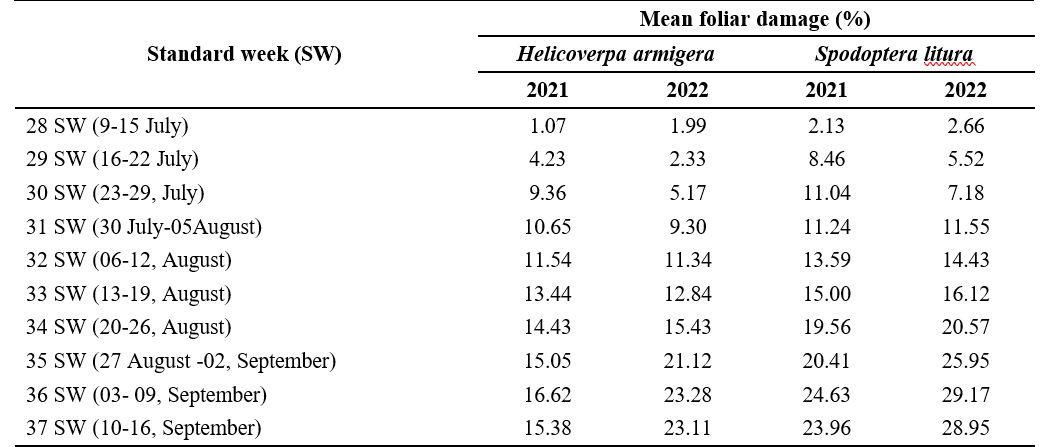
Table 2. Mean foliar damage due to lepidopteran insect pests on groundnut during kharif, 2021 and kharif, 2022- Second dateof sowing (D2) (30th June)

correlation was recorded in D3 (0.71) and D4 (0.69) sown crop. The other two weather parameters viz., rainfall and sunshine hours did not show any significant influence on defoliation due to H. armigera. Sunshine hours exhibited positive significant correlation (D4 = – 0.64) in D4 sown crop with respect to foliar damageby H. armigera. With respect to foliar damage by S. litura the maximum temperature showed a negative correlation in all dates of sowing (D1, D2, D3 and D4). However, a significant negative correlation (- 0.55) was obtained in D3 sown crop. Minimum temperature also exhibited the same trend where in all the correlation coefficients are negative with respect to dates of sowing, however a significant negative correlation (- 0.64) was recorded in D3 sown crop. The morning and evening relative humidity were observed to have significant positive association with D3 (first fortnight of July) (0.66 and 0.79, respectively) and D4 (second fortnight of July) (0.56 and 0.57, respectively) sown crops. The weather parameter viz., sunshine hours showed significant positive association (0.55) in D2 (second fortnight of July) sown crop, whereas rainfall even though showed a positive correlation in all the dates of sowing it was non-significant.
During kharif, 2022, maximum temperature in all the dates of sowing (D1, D2, D3 and D4) is negatively correlated with foliar damage by H. armigera. However, a significant negative correlation (-0.55) was recorded in D2 sown crop. Similarly, minimum temperature exerted significant negative correlation (D1 = – 0.87, D2 = – 0.65, D3 = – 0.74 and D4 = – 0.84) on the foliar damage by H. armigera in all dates of sowing. The weather parameters viz., morning relative humidity, evening relative humidity and sun shine hours in all the dates of sowing (D1, D2, D3 and D4) are positively correlated with foliar damage by H. armigera. However, a significant positive correlation 0.50) was recorded in D4 sown crop. The weather parameter, rainfall is positively correlated in D1 and D4 sown crops and negatively correlated in D3 and D4 sown crops with respect to foliar damage by H. armigera.
For S.litura, the maximum temperature showed a negative correlation in all dates of sowing (D1, D2, D3 and D4). However, a significant negative correlation (- 0.53) was obtained in D3 sown crop. Minimum temperature also exhibited the same trend where in all the correlation coefficients were negative with respect to dates of sowing, however a significant negative correlation (- 0.84, – 0.66 and – 0.74) was recorded in D1, D2 and D3 sown crops. The weather parameter viz., morning relative humidity was positively correlated (D1, D2, D3 and D4) in all the dates of sown crops. However, a significant positive correlation (0.50 and 0.60) was recorded in D2 and D3 sown crops. Evening relative humidity was also positively correlated (D1, D2, D3 and D4) in all the dates of sown crops. However, a significant positive correlation (0.58 and 0.53) was recorded in D3 and D4 sown crops, whereas rainfall even though showed
Table 3. Mean foliar damage due to lepidopteran insect pests on groundnut during kharif, 2021 and kharif, 2022 – Third date of sowing (D3) (15th July)
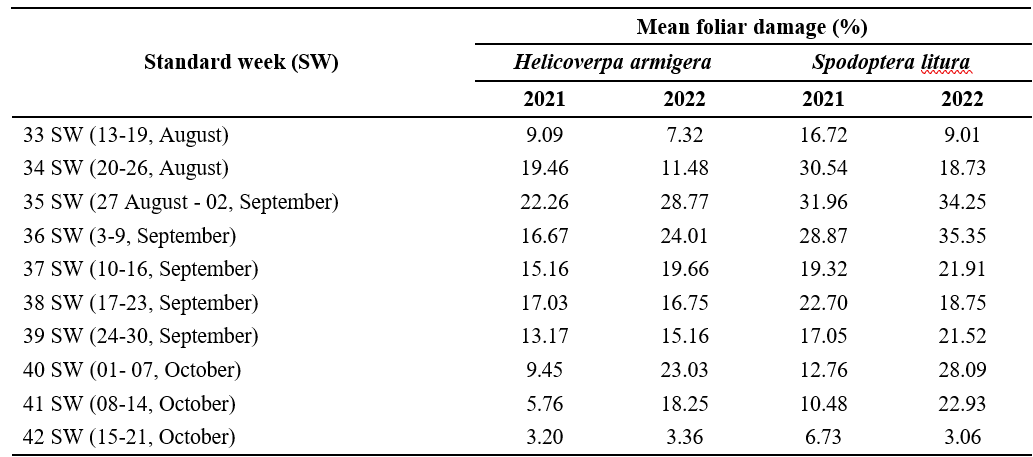
positive correlation in all the dates of sown crops (D1, D2, D3 and D4) but it was non-significant. The weather parameter sunshine hours was positively correlated (0.50) in D4 sown crop. (Table.5)
REGRESSION ANALYSIS
Regression analysis showed weather parameters viz., maximum, minimum temperature, morning, evening relative humidity, sunshine hours and rainfall influenced an extent of 71, 53, 79 and 82 per cent on defoliation caused by H. armigera in groundnut during D1, D2, D3 and D4, respectively in kharif, 2021. During kharif, 2022 maximum, minimum temperature, morning, evening relative humidity, sunshine hours and rainfall influenced an extent of 82, 78, 93 and 72 per cent on defoliation on groundnut during D1, D2, D3 and D4 respectively.
The regression studies of S. litura with the weather parameters during kharif, 2021 indicated that maximum, minimum temperature, morning, evening relative
Table 4. Mean foliar damage due to lepidopteran insect pests on groundnut during kharif, 2021 and kharif, 2022- Fourth date of sowing (D4) (30h July)

Table 5. Correlation co-efficient between weather variables and incidence of lepidopteran pests in groundnut during kharif, 2021 and kharif, 2022
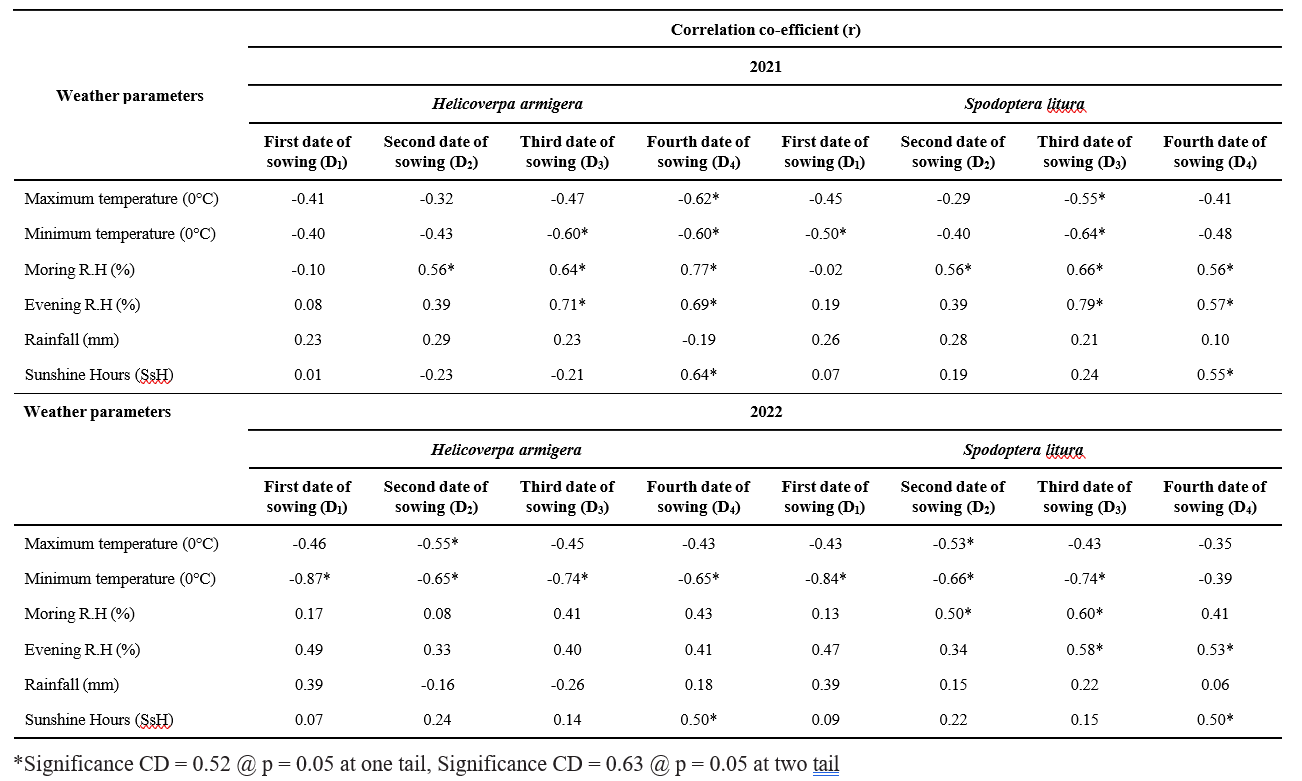
Table 6. Regression analysis for the relation between incidence of lepidopteran insect pests and weather factors during kharif, 2021 and kharif, 2022
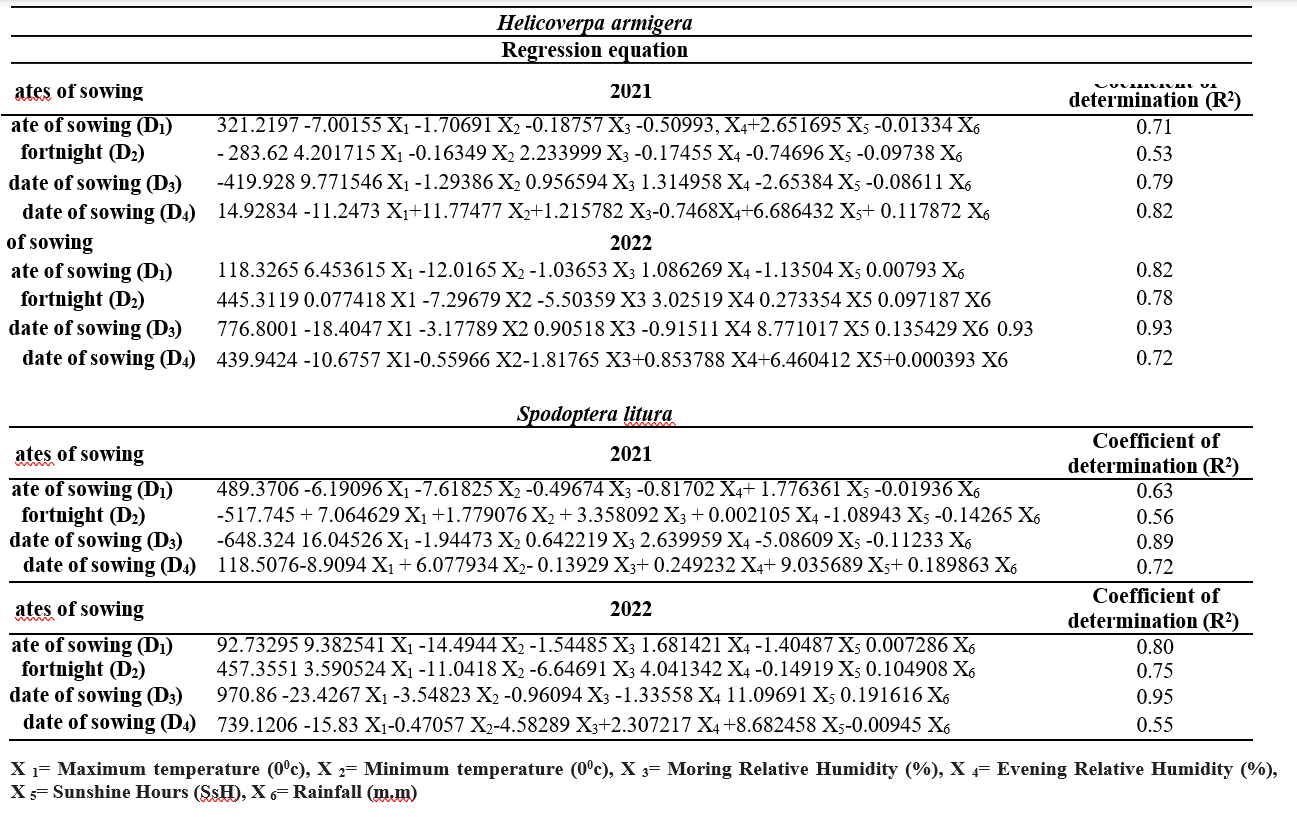
humidity, sunshine hours and rainfall influenced an extent of 63, 56, 89 and 72 per cent on defoliation in groundnut in first date of sowing (D1), second date of sowing (D2), third date of sowing (D3) and fourth date of sowing (D4), respectively.
During kharif, 2022, maximum, minimum temperatures, morning, evening relative humidities, sunshine hours and rainfall influenced an extent of 80, 75, 95 and 52 per cent of defoliation in groundnut in first date of sowing (D1), second date of sowing (D2), third date of sowing (D3) and fourth date of sowing (D4), respectively (Table.7 and 8).
The increase in the mean foliar damage in fourth date of sowing (D4) and third date of sowing (D3) due to H. armigera and S.litura was due to the influence of morning relative humidity prevailing during kharif, 2021 and kharif, 2022 and the same was reported by Dhandapani (1985) who recorded seasonal activity of S. litura on groundnut fields and indicated maximum larval population was recorded from 32nd to 36thmeteorological weeks with a peak in first week of September.
The present results are in conformity with Hegde et al. (2016) who reported that maximum temperature (r = -0.665) showed significant negative influence and significant positive influence (r = 0.701) on trapping of moth catches of S. litura from 1990 – 2000 on groundnut. Basavaraj et al. (2013) also reported the significant negative impact of minimum temperature (r = – 0.077 and – 0.671), significant positive effect of sunshine hours (r = 0.174 and r = 0.336) on S. litura and H. armigera incidence on sunflower.
Harish et al. (2015) also reported significant positive association of weather parameters viz., maximum temperature (0.56) and sunshine hours (0.64) with the incidence of H. armigera during kharif season in groundnut.
Nigude et al. (2016) reported positive significant correlation with temperature and relative humidity on incidence of tobacco caterpillar on groundnut. The same was supported by Aravind (2014) and Radhika (2013)
Naresh et al. (2017) reported that maximum temperature (r = -0.88 and – 0.85), minimum temperature (r = -0.85 and -0.85) showed significant negative influence on the incidence of S. litura and morning relative humidity (r = 0.80 and 0.74) and evening relative humidity (r = 0.81 and 0.77) were significant positive influence on the incidence of tobacco caterpillar on groundnut. Venkataiah et al. (2011) also reported that maximum and minimum temperatures were negatively correlated with S. litura damage.
The studies indicated that maximum and minimum temperatures showed a negative impact on foliar damage by H. armigera for all the four dates of sown groundnut crop (D1, D2, D3 and D4) and a significant negative correlation with minimum temperature for the foliar damage in D3 (-0.60) and D4 (-0.60) sown groundnut in kharif, 2021 and in kharif, 2022, The minimum temperature showed a significant negative association for H. armigera (- 0.87, – 0.65, – 0.74, – 0.65) in all the four dates of sowing.
The minimum temperature (-0.64) showed significant negative influence on foliar damage by S. litura in July first fortnight sown crop. The morning and evening relative humidity had positive association with foliar damage and was significant in D3 (0.66 and 0.79, respectively) and D4 (0.56 and 0.57, respectively) and only morning relative humidity showed significant influence in D2 (+0.56) sown groundnut crop in kharif, 2021.In kharif, 2022, minimum temperature pertaining to first date (D1), second date (D2) and third (D3) date sown crop showed significant negative influence (-0.84, -0.66 and -0.74, respectively) and non significant influence in forth date of sowing i.e., D4 (- 0.39).
LITERATURE CITED
Aravind, K. 2014. Influence of weather parameters on pheromone trap catches of Spodoptera litura Fab. Journal of Agri Search. 1(4): 238- 241.
Basavaraj, K., Geetha, S., Jagadish, K.S., Mohan, I., Naik and Shadakshari, Y.G. 2013. Influence of meteorological factors on sex pheromone trap catches of Helicoverpa armigera (Hub.) and Spodoptera litura (Fab.) in sunflower (Helianthus annuus L.). Current Biotica. 7(3): 174-182.
Dhandapani, N. 1985. Trapping of Spodoptera litura (Fab.) moths using sex pheromone. Madras Agricultural Journal. 72: 235-238.
Directorate of Economics and Statistics, Ministry of Agriculture and Farmer’s Welfare. 2022. Area, production and productivity of groundnut. 227.
Harish, G., Nataraja, M.V., Jasrotia, P., Holajjer, P., Savaliya, S.D. and Gejera, M. 2015. Impact of weather on the occurrence pattern of insects pests on groundnut. Legume Research. 38(4): 524-535.
Hegde, M.G., Santoshakumara, M.A, Yenagi, B.S and Patil R.K. 2016. Influence of weather parameters on pheromone trap catches of Spodoptera litura male moth. Journal of Experimental Zoology. 19(2): 1173-1176.
- Production Potential of Sweet Corn as Influenced by Organic Manures and Foliar Nutrition
- Characterization of Grain Iron and Zinc Content in Little Millet Genotypes
- Faunistic Studies on Economically Important Lepidopterans in Different Field Crops of Tirupati District
- An Annotated Checklist of Cyperceae, Eriocaulaceae and Potamogetonaceae of Chhattisgarh
- Genetic Divergence Studies for Yield, Yield Components and Resistance to Late Leaf Spot in Groundnut (Arachis Hypogaea L.)
- Effect of Organic Farming on Soil Enzymatic Activity and Productivity of Groundnut Based Cropping System

